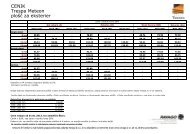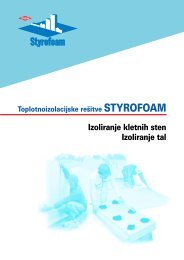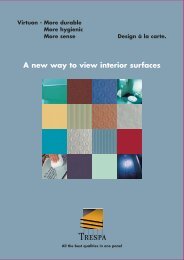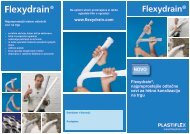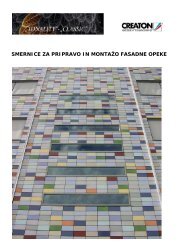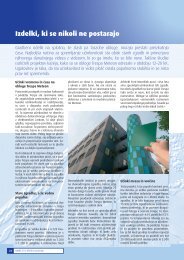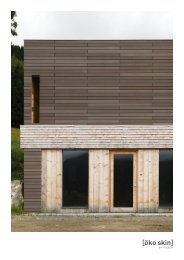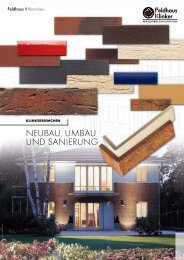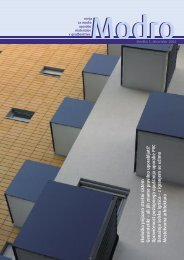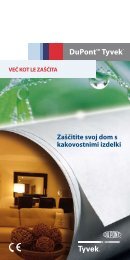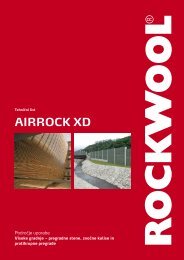Fibre C - Ravago
Fibre C - Ravago
Fibre C - Ravago
You also want an ePaper? Increase the reach of your titles
YUMPU automatically turns print PDFs into web optimized ePapers that Google loves.
fibreC - Revolution in Concrete<br />
fibreC is a glassfibre reinforced concrete material that unites the<br />
advantages of both glassfibres and concrete. Behind the development<br />
of fibreC lies the vision of creating a light and stable concrete<br />
cladding panel that withstands the effects of weather and environmental<br />
conditions, while combining durability and valuable design.<br />
Glassfibre reinforced concrete: slender and strong<br />
Concrete is made from natural materials and has been used by people<br />
for many years. The first experiments with glassfibre reinforced<br />
concrete were made more than three decades ago. Wolfgang Rieder<br />
took stock of the results of these experiments and pushed on with the<br />
development of the material. Using top-class technology, the fibreC<br />
group made glassfibre reinforced concrete suitable for new areas of<br />
application. The characteristics of fibreC, its quality, wide range of<br />
design options and durability offer new, original and cutting-edge<br />
ways of using concrete that were unimaginable just a short time ago.<br />
treatment. A concrete cover for concrete components with metallic<br />
reinforcements is no longer required. This means concrete elements<br />
can be thin, slender and light. The use of pure mineral raw materials,<br />
natural stone components and glassfibre reinforcements guarantees<br />
quality that meets the highest requirements. The wide range of<br />
applications for fibreC nurtures the joy of creative experimentation.<br />
A safe material<br />
Ninety percent of fibreC glassfibre reinforced concrete consists of<br />
sand and cement; the remaining 10% is made of glassfibres, pigments<br />
and concrete additives. This makes the panels robust and<br />
extremely durable. fibreC withstands enormous pressure with a<br />
minimum thickness and extremely large panel size. The material<br />
guarantees absolute safety thanks to its excellent thermal values,<br />
offering temperature stability of up to 350° C. fibreC glassfibre reinforced<br />
concrete is not flammable.<br />
Material<br />
Glassfibre reinforced concrete as a building material<br />
The classic material concrete exhibits good compressive strength,<br />
but is also brittle and has a low tensile strength. This disadvantage<br />
is overcome with the production of a composite material consisting<br />
of concrete and a tension-resistant layer. Glassfibre reinforced<br />
concrete is made from cement-bonded fine concrete reinforced<br />
with alkali-resistant glassfibres. Unlike steel fibres, glassfibres provide<br />
a distinct advantage in that they do not require anti-corrosion<br />
Facade Applications:<br />
• Ventilated rainscreen cladding exterior wall<br />
• Infillings post and beam constructions<br />
• Overlapping cladding<br />
• Exterior cladding for composite elements<br />
• Moulded coverings<br />
• Cladding for window embrasures<br />
• Cladding for window frames and doorframes<br />
• Verge and eave terminations<br />
• Roof soffits<br />
• Balcony panelling<br />
• Portal constructions<br />
• Skirting board cladding<br />
Standard constructions for ventilated fibreC facades:<br />
• Concealed fastening with undercut anchor (p. 40)<br />
• Visible fastening with rivets (p. 46)<br />
• Concealed fastening with adhesive (p. 52)<br />
11



